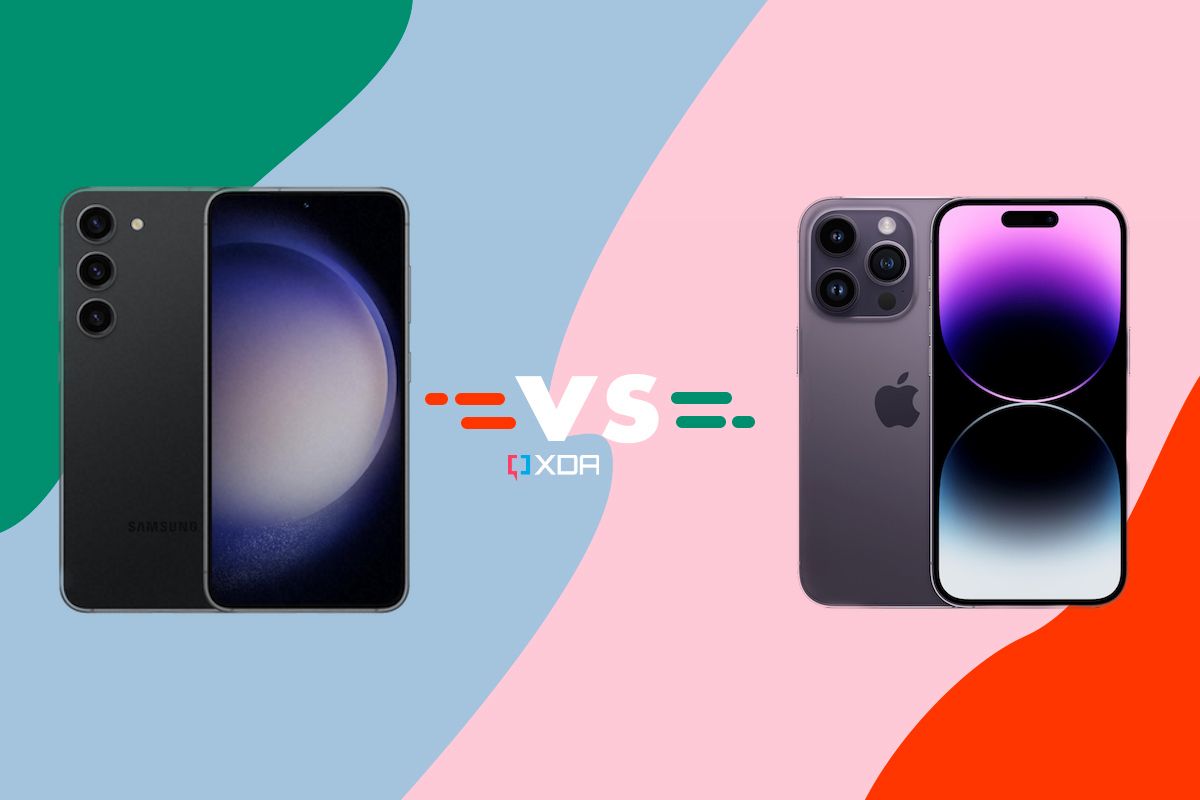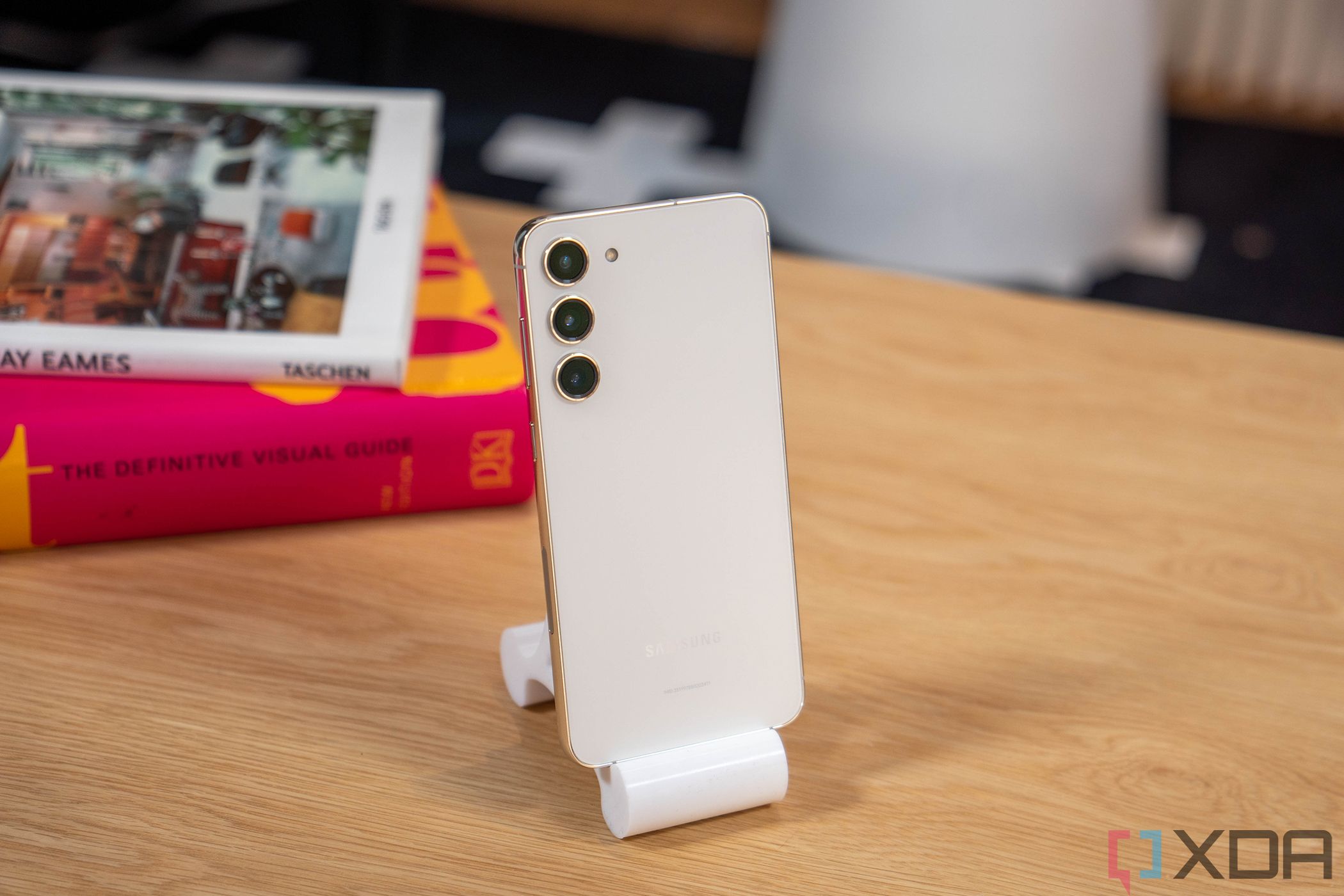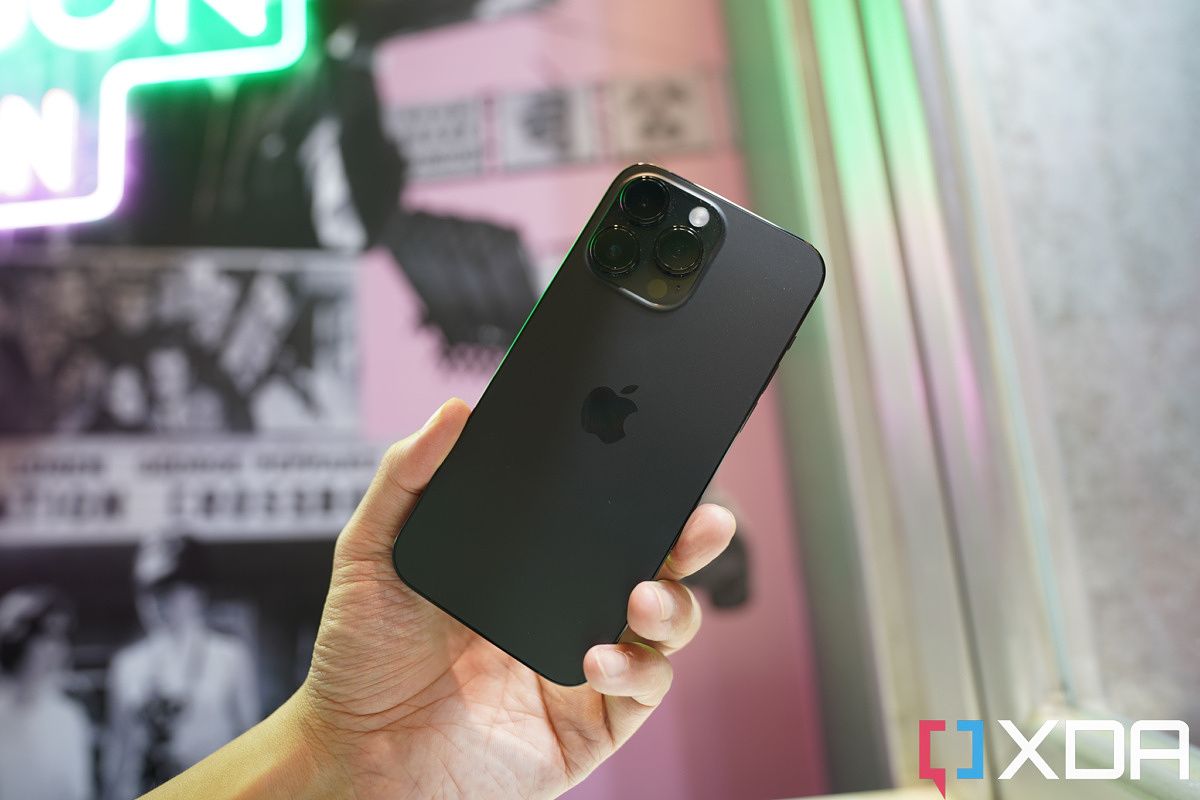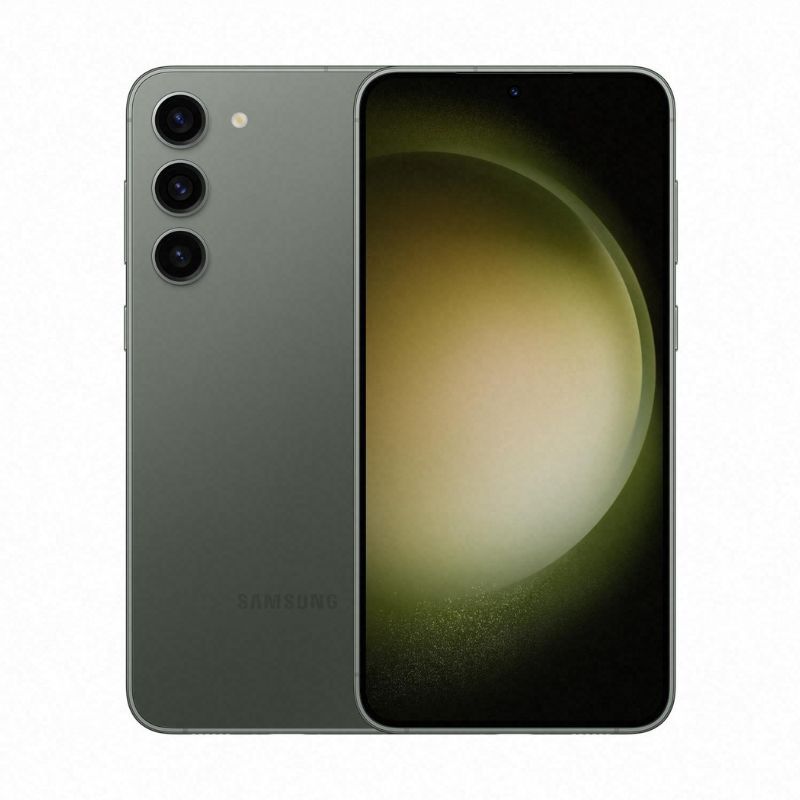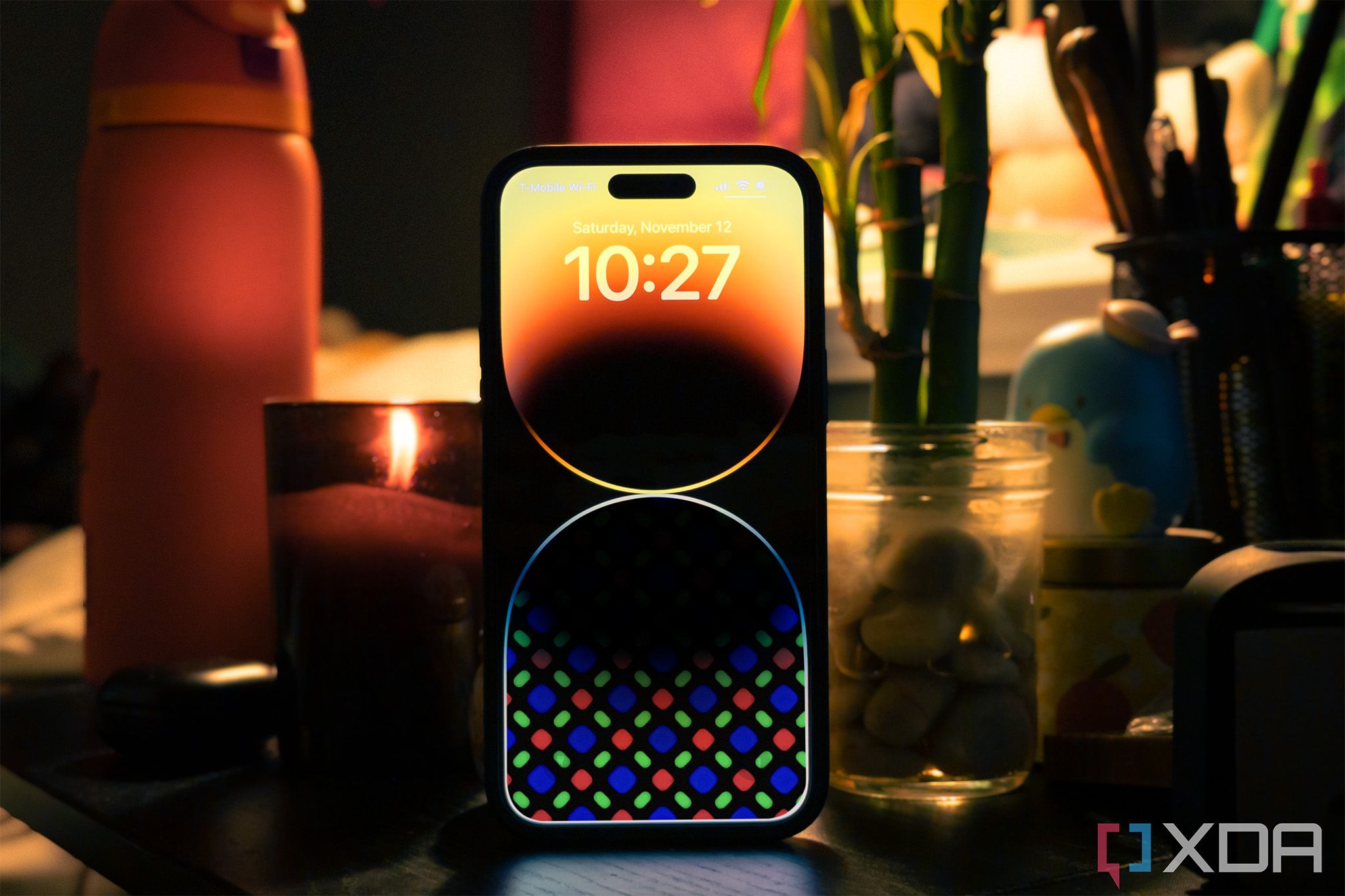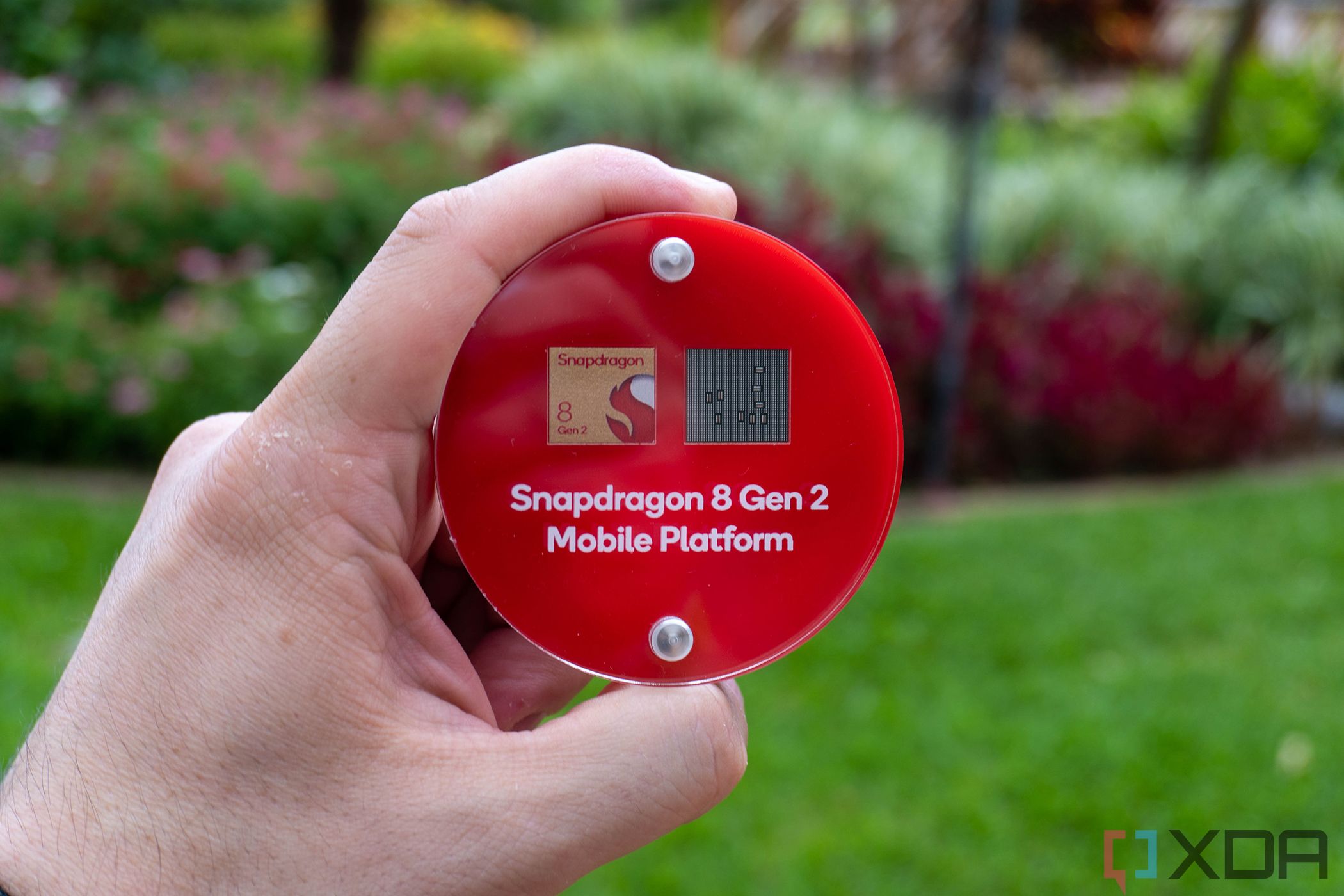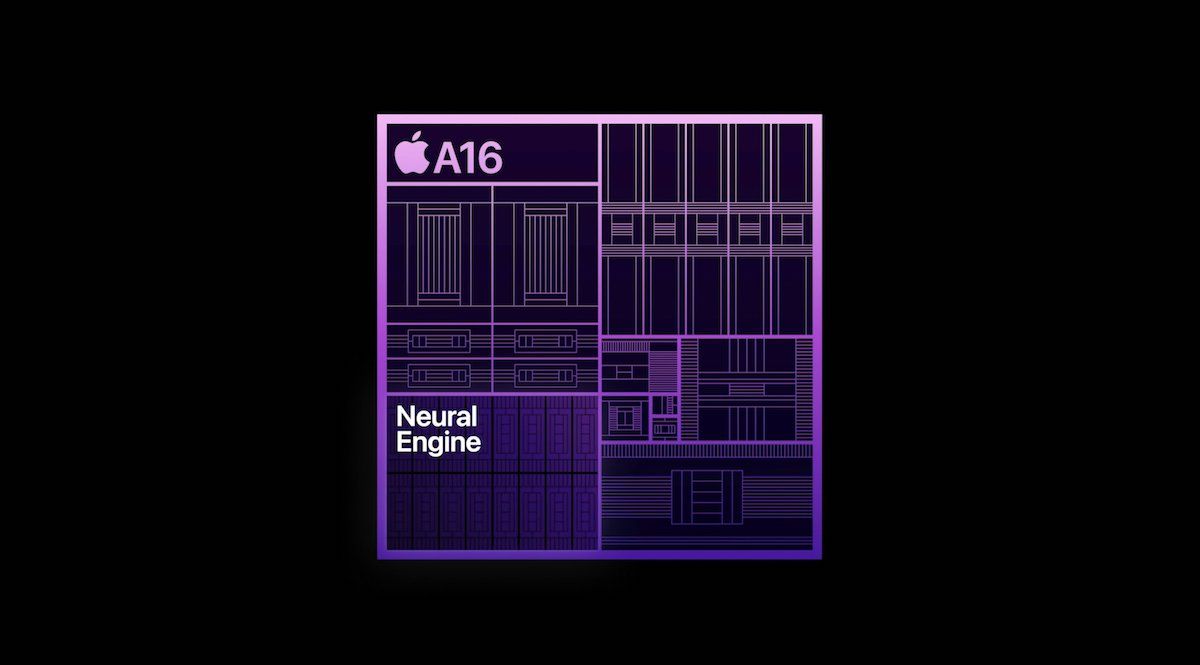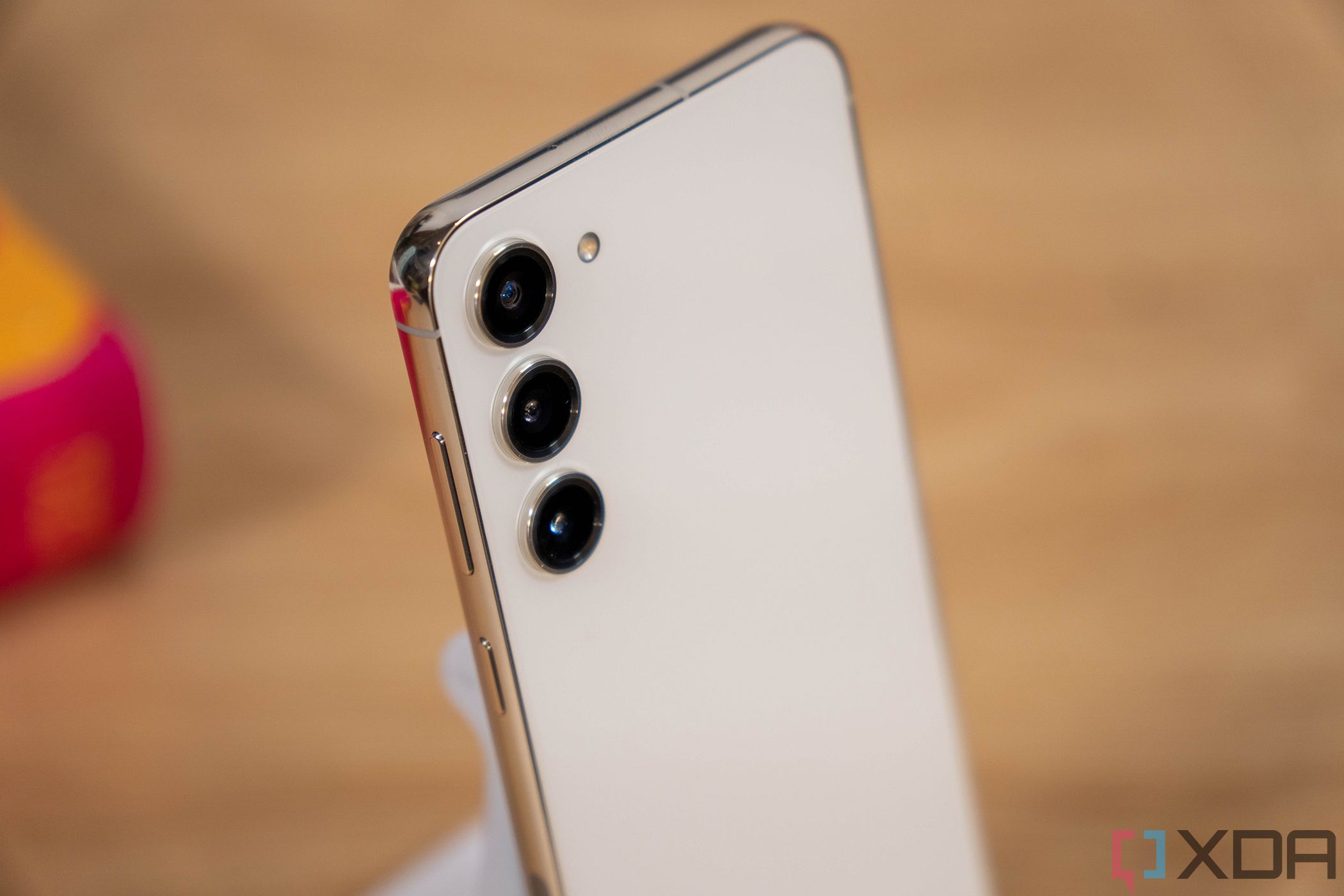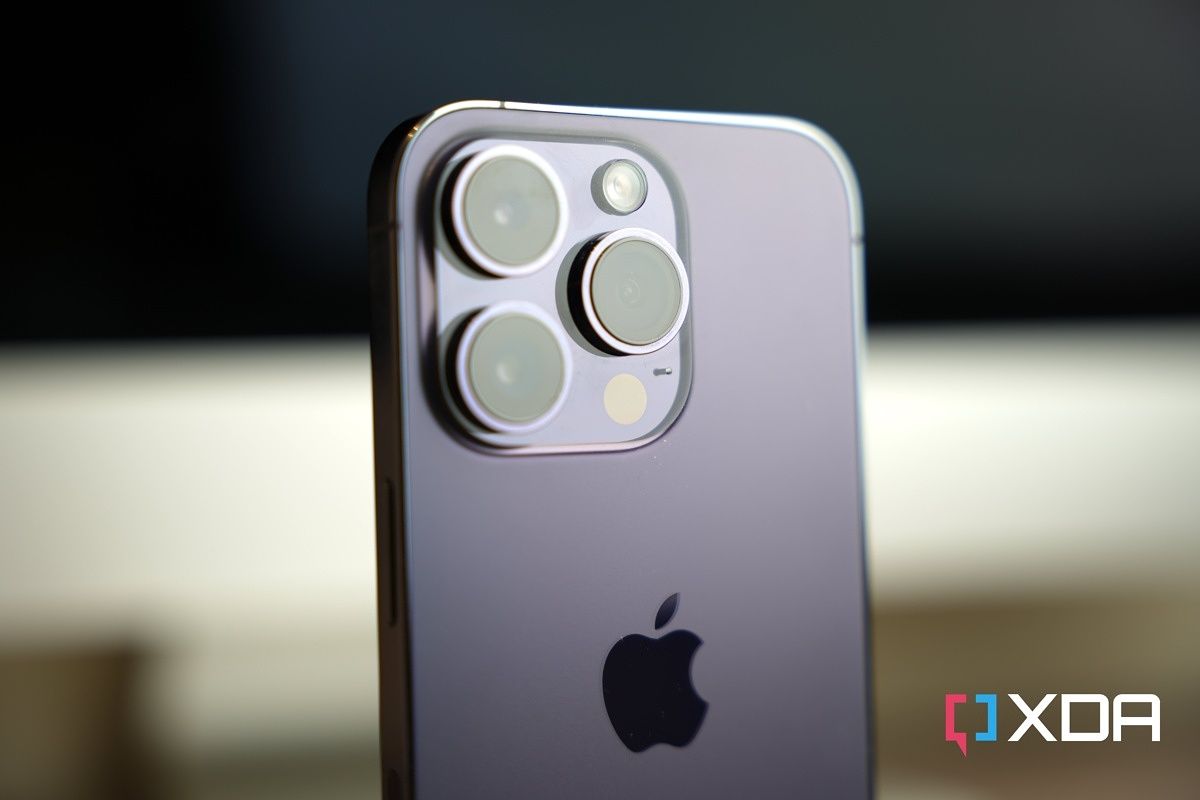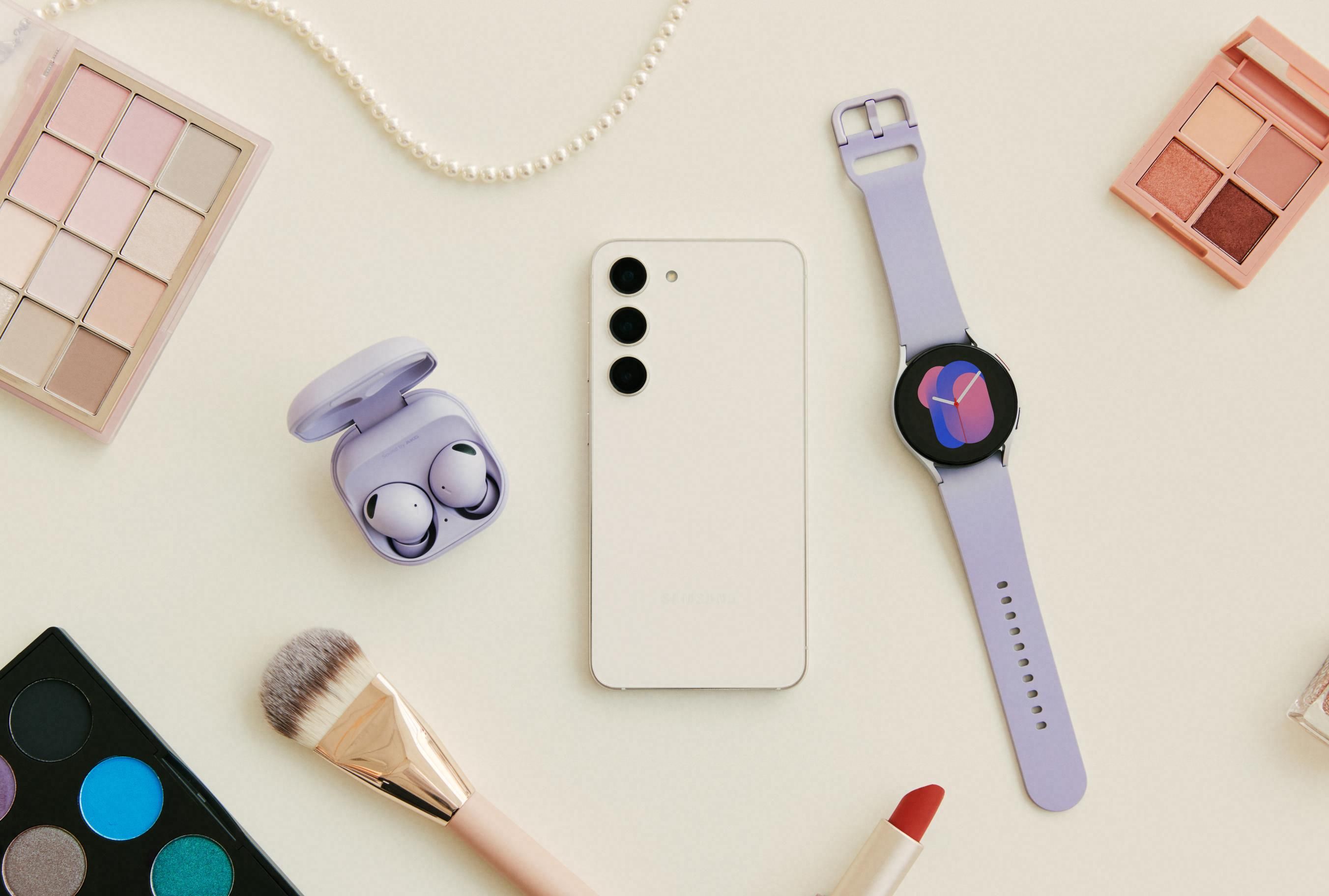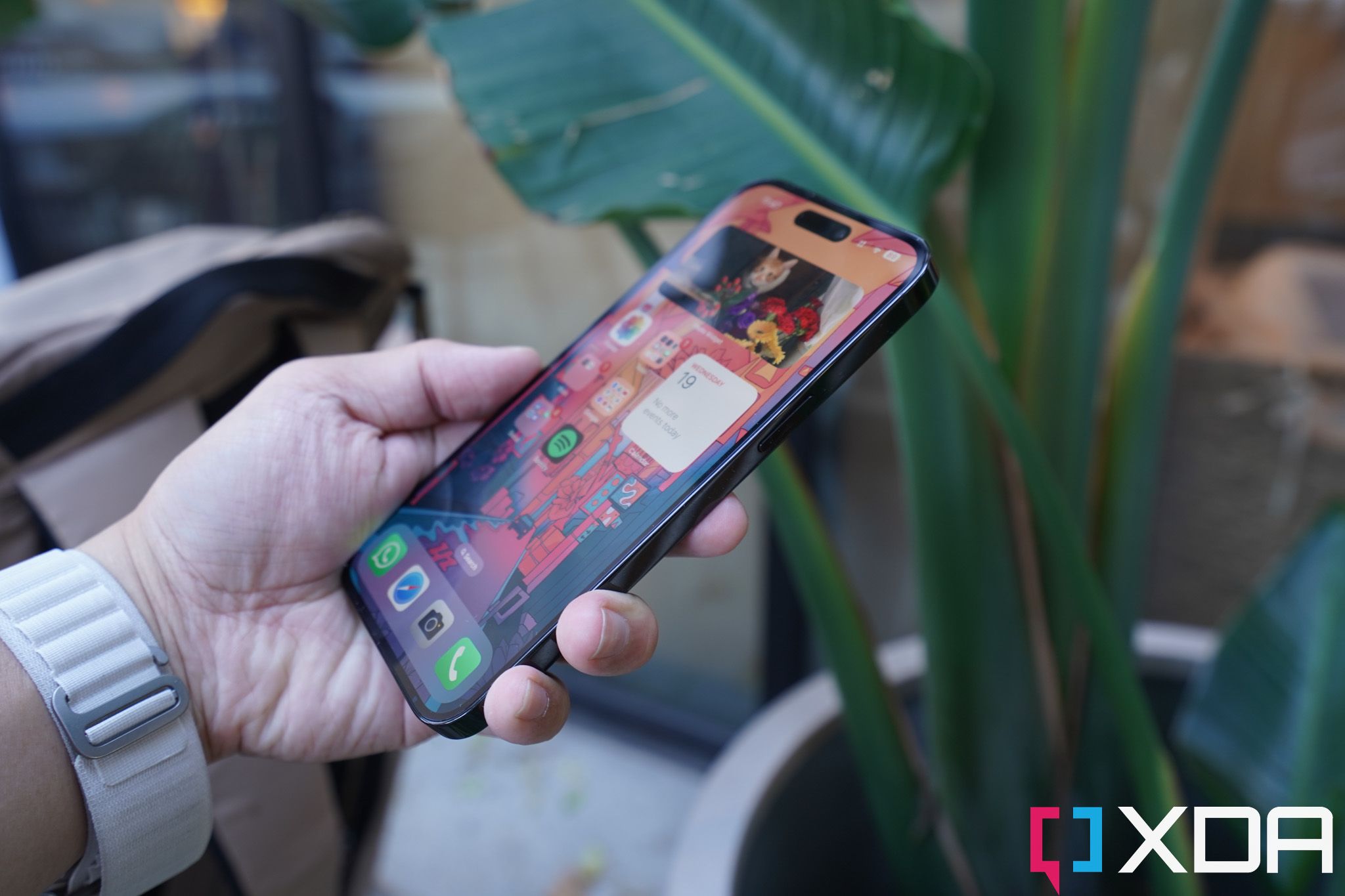Quick Links
Picking a new smartphone to buy can be a confusing process. After all, there are endless models from various brands to pick from, and with every passing month, the number only increases. If you have a $999 budget, then the Samsung Galaxy S23+ is a solid option. For the same price, though, you can alternatively grab an iPhone 14 Pro. So should you choose a device from the Galaxy S23 series or iPhone 14 series? Let's break both down, compare them, and figure out which phone is right for you.
-
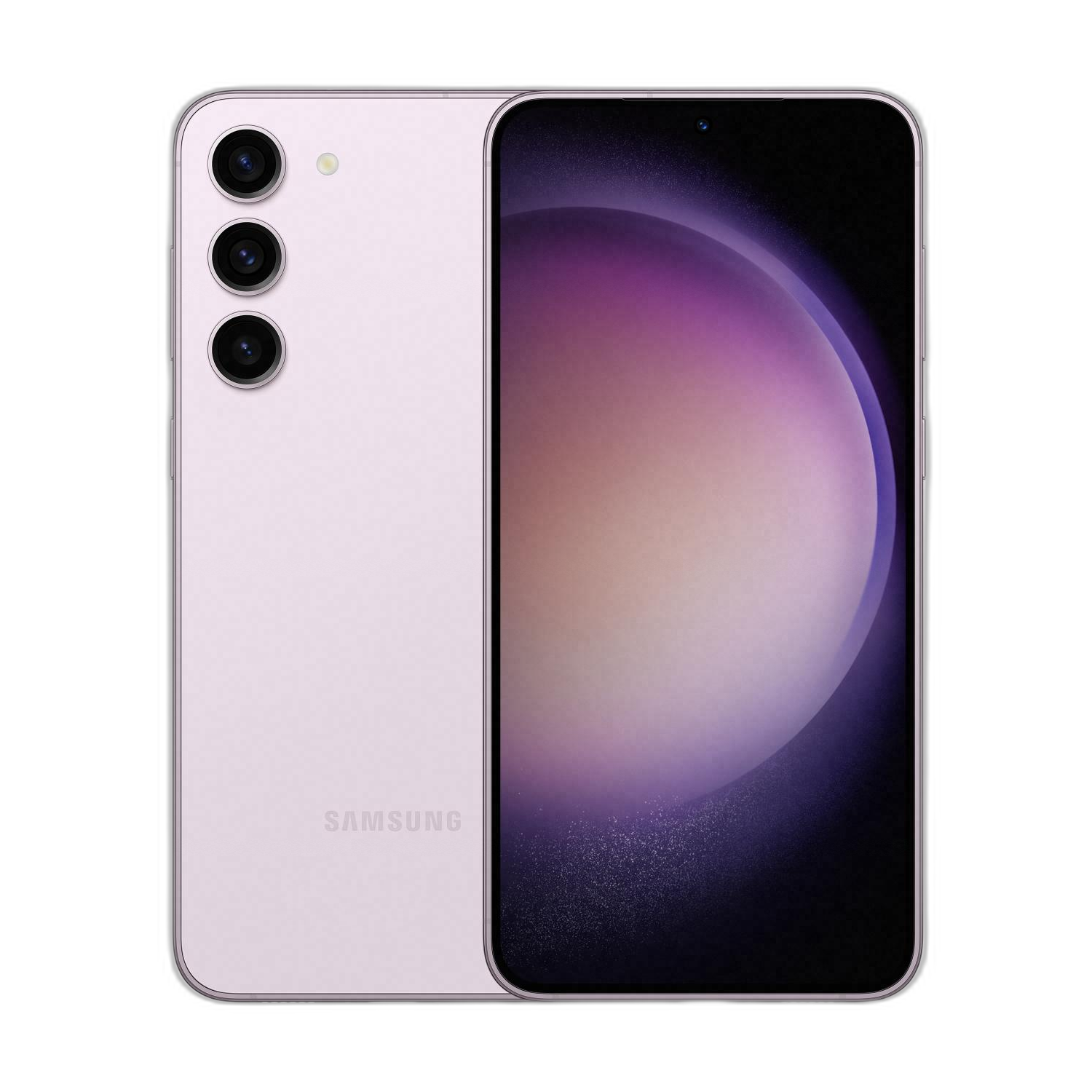
Samsung Galaxy S23+
The Samsung Galaxy S23+ is slightly bigger than the regular model. That means the screen is bigger, and the battery is bigger, too. It also comes with the same 50MP camera sensor as the S23 and in the same four colors.
-
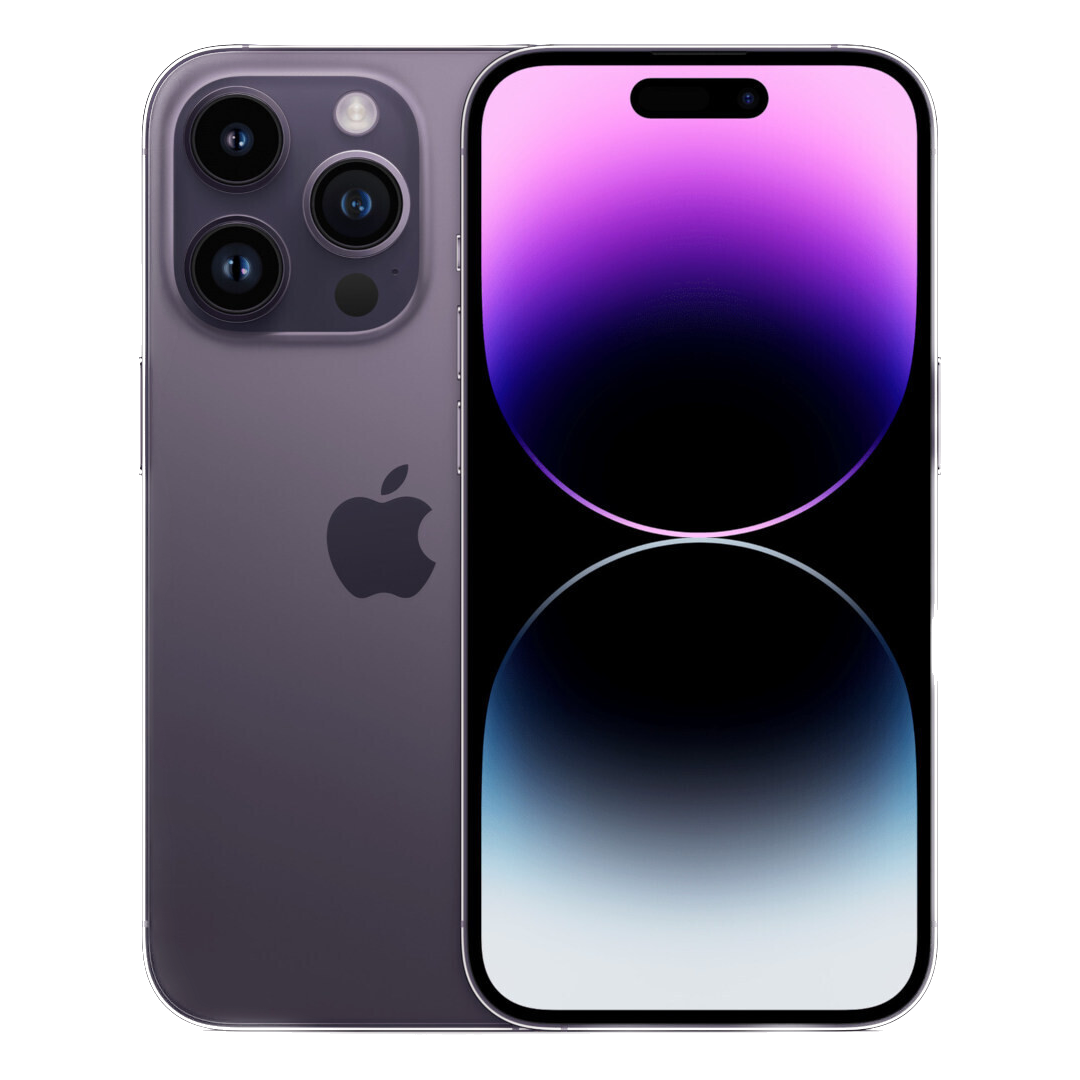
Apple iPhone 14 Pro
The iPhone 14 Pro brings a new front design, upgraded cameras, and all-powerful Apple silicon for 2022's premium Apple phone.
Pricing and availability
The Samsung Galaxy S23+ and Apple iPhone 14 Pro are both available to buy through their respective manufacturers' online stores. That's in addition to most major U.S. retailers. The two phones start at $999, and the pricing increases if you opt for higher-end configurations. The former offers Phantom Black, Cream, Green, and Lavender colors, while the latter goes for Space Black, Deep Purple, Silver, and Gold finishes.
Galaxy S23+ vs iPhone 14 Pro: Specifications
|
Specification |
Samsung Galaxy S23+ |
Apple iPhone 14 Pro |
|
Build |
|
|
|
Dimensions & Weight |
|
|
|
Display |
|
|
|
SoC |
|
|
|
Storage |
|
|
|
Battery & Charging |
|
|
|
Security |
|
|
|
Rear Camera(s) |
|
|
|
Front Camera(s) |
|
|
|
Port(s) |
|
|
|
Connectivity |
|
|
|
Software |
|
|
|
Finishes |
|
|
Design
When we want to use a phone, its design is the first element we interact with. We lay our eyes on its exterior hardware, prior to interacting with its software. That's why it's important to pick a smartphone with an outer chassis that fits our age. Fortunately, both phones are modern-looking and offer minimalistic builds. So instead of crowning a winner, we will just make near-objective observations to help you decide which device better matches your personal taste.
Starting with the backside of the Galaxy S23+, you get a plain back with three camera lenses arranged vertically towards the top left corner. Towards the bottom center, you get the Samsung logo, and that's pretty much it in regard to this side of the phone. The Samsung device is made from glass and aluminum, giving it a high-end look, while also maintaining its light weight.
Moving on to the iPhone 14 Pro, you also get three rear camera lenses towards the top left. Though, as the photos show, they have a different arrangement. Which assortment looks better depends on your subjective taste. Similarly, you get a centered Apple logo on the back, and that's all. This Apple phone is built from stainless steel and glass, giving it a more premium appearance. Though, the stainless steel scratches and shows fingerprint smudges very easily, and it looks messy within hours of use without a case. That's not to mention that it significantly contributes to the weight, making the iPhone 14 Pro heavier than the Galaxy S23+, despite its smaller size.
Galaxy S23+ vs iPhone 14 Pro: Display
The display is another noteworthy aspect to consider when investing in new tech. After all, we pretty much spend the entire use time interacting and looking at the screens of our phones. Luckily, both displays are excellent, and they offer the specifications you'd expect on a flagship phone. Despite that, there are key differences that set the two apart. This round is also a tie, since you will have to prioritize a set of pros and cons based on your personal expectations. So let's break them down!
The Galaxy S23+ has a 6.7-inch display, which is notably larger than the 6.1-inch one found on the iPhone 14 Pro. If you prefer larger screens, then this is arguably the only major pro the Samsung phone has over the iPhone. After all, both phones have screen cutouts, Always-On display support, 120Hz adaptive refresh rates, etc.
When it comes to the iPhone 14 Pro, though, the device shines in more than one way. For starters, you get a higher pixel density of 460ppi, which dominates the 393ppi one found on the Galaxy S23+. Additionally, the iPhone has a higher peak brightness of 2,000 nits, which obliterates the 1,750-nit one offered by the Galaxy phone.
So if you prefer smaller phones or don't have a size preference, then the iPhone 14 Pro is hands down the winner of this round. However, if you prefer the larger 6.7-inch screen, then it's a tie, and you will have to choose between a brighter screen with a higher pixel density or a larger one.
Performance
Performance rounds have become somewhat pointless when it comes to high-end phones. That's because pretty much all new releases falling in the flagship category perform excellently when it comes to everyday phone tasks. However, if you care about benchmarks, the Apple A16 Bionic wins over Qualcomm's Snapdragon 8 Gen 2 in single-core, multi-core, power efficiency, and overall tests. When it comes to graphics, the two chips score similarly. But despite the iPhone 14 Pro being more powerful than the Galaxy S23+, this shouldn't really sway your decision, since the differences likely won't be noticeable at all when you're using your device normally.
So instead of focusing on relatively irrelevant numbers, let's shift our attention to what you, as a user, would personally notice: storage. We're all tired of the full-storage alerts, and if you're investing in a new flagship, you'd want it to last for years. So a wise move would be getting a model with plenty of local storage. After all, neither of the two has an SD card slot, and you will have to depend on cloud solutions if you run out of SSD.
This round is an easy win for the iPhone 14 Pro because its storage maxed out at 1TB. On the other hand, the Galaxy S23+ offers no more than 512GB. If 512GB is enough for you, then consider the operating systems on these devices. The Galaxy S23+ runs a skinned Android version, while the iPhone 14 Pro runs iOS. If you are tied into a certain ecosystem or are actively avoiding falling into a tight ecosystem trap, then you may want to choose your new phone based on the OS it runs.
Samsung promises four years of major feature updates and five years of security patches, while Apple usually offers around five years of feature updates and sometimes a whopping decade of security patches. Though, if you plan on upgrading your phone again in four years or less, this shouldn't matter, as both phones should have the software latest updates by then.
Galaxy S23+ vs iPhone 14 Pro: Camera
Smartphone lenses have replaced dedicated digital cameras for most average. Instead of carrying a separate device around to document our everyday moments, we usually rely on our phones to snap these photos and videos. The good news is that both phones offer excellent camera systems, and this round is another tie.
Starting with the rear-facing cameras, you get wide, ultra-wide, and telephoto lenses on both phones. As the specification table above reflects, they also have similar resolutions and apertures. As a result, they both can take portrait mode shots with blurry backgrounds, nighttime shots, etc. Though, the Galaxy S23+ is superior when it comes to zooming and taking photos under challenging conditions, such as starry, moonlit skies. Meanwhile, the iPhone 14 Pro has a LiDAR Scanner, allowing you to 3D map your environment, take nighttime portrait shots, and more.
Moving on to the front-facing side, the Galaxy S23+ offers a regular 10MP lens for selfies and traditional facial recognition. Meanwhile, the iPhone 14 Pro goes for TrueDepth system, packing a 12MP lens, an IR camera, and a dot projector. This allows the phone to 3D-map your face and authenticate with Face ID in pitch-black places. As an alternative to the inferior Galaxy S23+ facial recognition feature, Samsung also offers a fingerprint scanner for those who prefer that.
If you're looking for better zoom support, then the Samsung phone is the one to pick. Otherwise, the Apple iPhone offers a LiDAR Scanner on the backside, a superior front camera system, and more advanced video recording features, such as Action mode for stabilizing footages shot in shaky setups.
Battery
We typically charge our smartphones nightly, and both of these phones should last you a full day on a single charge. So let's focus on what's more important at this point in the batter department. This round is a win for the Samsung Galaxy S23+ for packing more advanced technologies when it comes to this matter.
The Galaxy S23+ has a USB Type-C ports, which is newer and more adopted than the iPhone 14 Pro's decade-old Lightning port. Additionally, the Samsung phone supports faster wired charging speeds when compared to the iPhone. In the wireless department, though, both phones max out at 15W, assuming you're utilizing MagSafe on the Apple phone (Qi maxes out at 7.5W on iPhones).
Though, what's arguably even more impressive is Wireless PowerShare, Samsung's reverse wireless charging feature. This allows you to use your Galaxy S23+ as a Qi pad to wirelessly charge another compatible device, such as your smartwatch or earbuds. This offering remains absent on all iPhones released to date.
Galaxy S23+ vs iPhone 14 Pro: Which should you buy?
So now that we've broken down the important aspects of the Galaxy S23+ and iPhone 14 Pro, it's time to make a decision. Starting with the budget, both phones start at the same $999 price tag, so this shouldn't play a role in your judgment. Moving on to the operating systems; as we previously mentioned, if you have an Android OS or iOS preference, then you're respectively limited to the Galaxy S23+ or iPhone 14 Pro.
If you're OS-agnostic, then consider the displays; do you want the larger one or the one with superior specs? What about the storage; is 512GB enough for you, or do you think you would need more? Do you see yourself needing the reverse wireless charging technology? After answering all of these questions and referring to their dedicated sections above, you should be able to weigh your pros and cons, prioritize what matters to you, and make a purchasing decision accordingly. And consider checking our best Galaxy S23+ cases if you're interested in adding a protective layer.
-

Samsung Galaxy S23+
The Samsung Galaxy S23+ is slightly bigger than the regular model. That means the screen is bigger, and the battery is bigger, too. It also comes with the same 50MP camera sensor as the S23 and in the same four colors.
-

Apple iPhone 14 Pro
The iPhone 14 Pro brings a new front design, upgraded cameras, and all-powerful Apple silicon for 2022's premium Apple phone.

